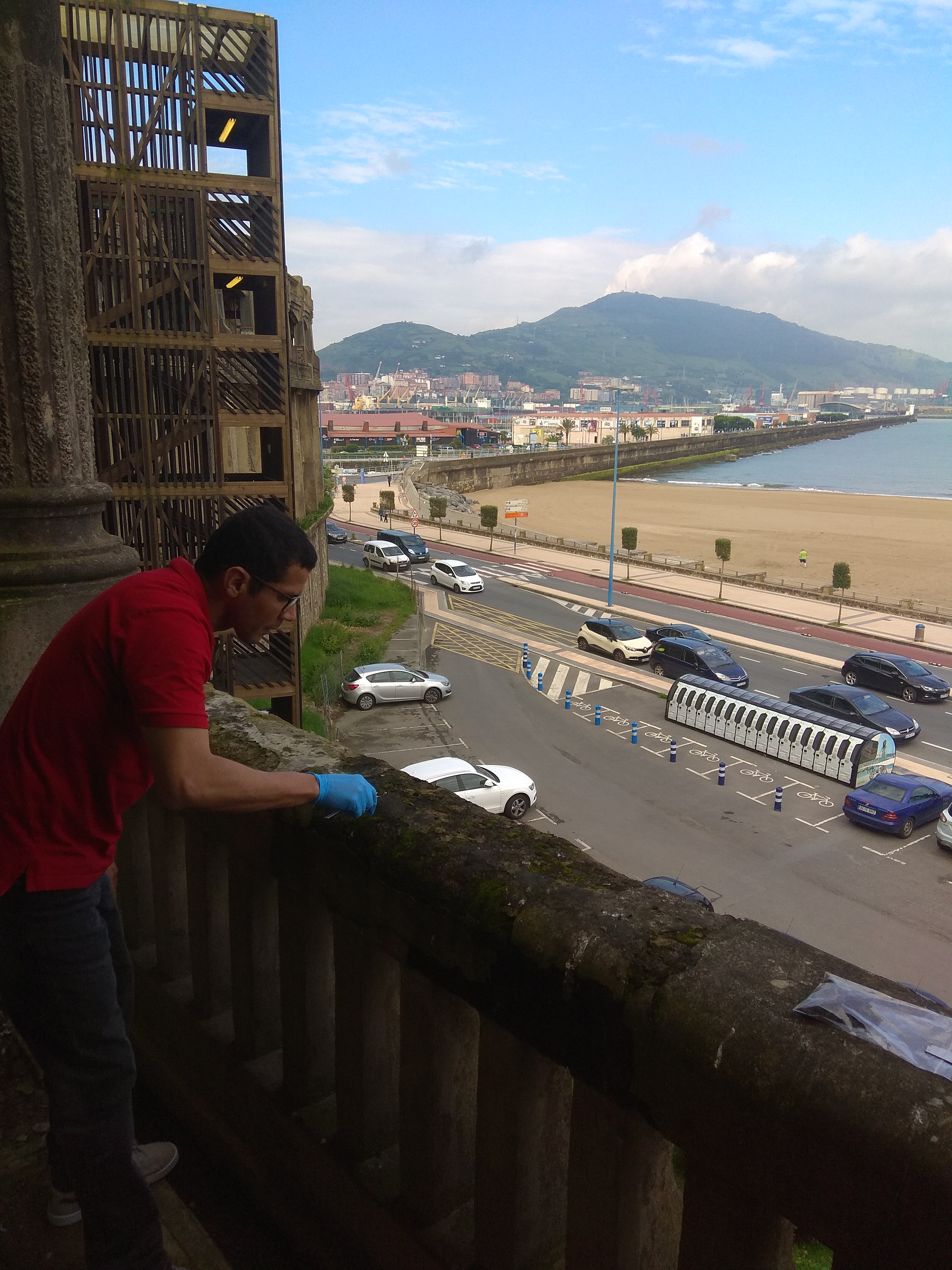A study carried out by the IBeA research team, in collaboration with the GESSA research team from Colombia's Universidad de la Costa, proposes naturally growing grimmiaceae mosses as a means of passively biomonitoring heavy metals pollution and identifying the anthropogenic sources that contribute to the emission of airborne particulate matter rich in metals. The teams have assessed atmospheric heavy metals pollution in six locations in the Basque province of Bizkaia.
Mosses which serve as indicators of atmospheric heavy metals pollution
The University of the Basque Country (UPV/EHU) has found that mosses from the grimmiaceae family can be used as passive biomonitors of heavy metals pollution in the atmosphere
- Research
First publication date: 07/01/2021

Why do some species of colonisers, such as mosses and lichens, grow more than others in certain places? According to a researcher working with the IBeA team at the UPV/EHU, Maite Maguregui, 'depending on the species, even just a visual assessment may give us an idea of the atmospheric pollution present in a certain area. The growth of certain species with different capacities to withstand pollution provides information about the quality of the atmosphere, at least in relation to the presence of heavy metals in particulate matter.'
Biomonitoring is a relatively cheap and easy-to-apply method which uses living organisms to monitor and assess the impact of different pollutants on a given area. The organisms used have the ability to monitor pollution and are also known as passive biomonitors, since they are capable of identifying possible sources of pollution without the need for additional instruments.
In the study carried out at six locations in the Basque province of Bizkaia (Muskiz, Getxo, Lutxana, Zamudio, Basauri and Amorebieta-Etxano), a multianalytical methodology was applied to verify the usefulness of naturally growing mosses from the Grimmia genus as passive biomonitors of atmospheric heavy metals pollution. Once the mosses had been identified in accordance with their morphology and taxonomy, the team verified their capacity to accumulate particulate matter and identified the main metallic particles deposited on them. Finally, they defined (with a greater degree of precision) the levels of metal accumulated in each type of moss collected.
Accumulative study of the particles
According to Maguregui, what is monitored is not a specific spike in pollution due to a one-off event. Rather, 'the moss reflects an accumulative effect. The moss is not new, it has been growing and accumulating metals for a long time; this tells us that there have been different events over the years.' The results obtained reveal that the different heavy metals detected in the particulate matter trapped and accumulated by the moss are closely linked to anthropogenic activities, including road, rail and maritime traffic emissions and emissions from the iron industry, oil refineries, power stations and tar distillation plants, among others. Nevertheless, Maguregui stresses the fact that 'at no point have we found concentrations that are concerning from a health perspective.'
One finding worth highlighting is the high concentration of lead at Punta Begoña (Getxo), which is ten times higher than that found at the other sampling points. In this case, by crossing this result with experimental evidence collected in additional supports (particles accumulated in the black crusts growing on building materials), the team was able to confirm that this area had been strongly impacted by lead emissions in the past.
Furthermore, 'given that at Lutxana, the majority of heavy metals (titanium, copper, zinc, iron and manganese) were found at much higher concentrations than at the other sampling points, we were able to conclude that Lutxana is the location with the highest concentration of heavy metals in the atmospheric particulate matter trapped in moss. In contrast, Zamudio was the least contaminated sampling point,' she concludes.
Complementary information
This study forms part of the doctoral thesis carried out by Euler Gallego Cartagena, thanks to a collaboration agreement between the University of the Basque Country and the Universidad de La Costa in Colombia.
Bibliographic reference
- Naturally growing grimmiaceae family mosses as passive biomonitors of heavy metals pollution in urban-industrial atmospheres from the Bilbao Metropolitan area
- Chemosphere
- DOI: 10.1016/j.chemosphere.2020.128190



